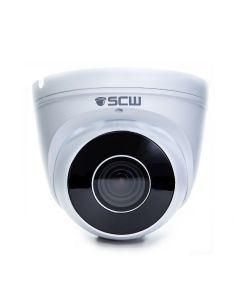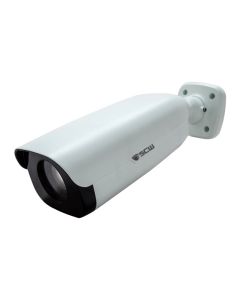Digital WDR vs True WDR vs True HDR
HDR and Digital WDR (DDR) mean the same thing: software that helps the camera in challenging lighting conditions.
True WDR is both digital and hardware changes to the camera to help it take better photos in low light.
True HDR is nonsense.
What is Digital Wide Dynamic Range and True Wide Dynamic Range?
For decades, the best security cameras have included WDR. WDR takes a low light optimized and a high light optimized image setting and stitches the two photos into one image to prevent shadows from being too dark.
The industry-standard way of describing WDR is to state whether it is digital or True/Optical. True/Optical WDR is better because optical WDR also includes digital WDR - with True WDR you get both software and hardware improvements. Optical / True WDR ranges in quality. It is measured by a dB rating, with higher dB ratings being better.
True WDR uses hardware to improve the image that is captured and then uses software to clean up the image in post-processing (after the image is made).
True WDR is better than Digital WDR.
What is High Dynamic Range (HDR)?
High Dynamic Range (HDR) is a synonym for Digital Wide Dynamic Range. HDR really became popular when smartphones started using the term to brighten up photos to make them look more vibrant, but HDR was an option in photo editing software well before that. Like DWDR, it uses software to clean up the image in post-processing (after the image is made).
DWDR / HDR is software that helps clean up the image. It is inferior to True WDR.
Not all True DWR cameras are the same
Understanding dB Units:
The dB unit is the ratio of the brightest and the dimmest object that can be captured by the camera. This tells you the range where the WDR works. The higher the ratio, the greater the difference between the low light and high light spectrum that the camera can capture, and the better your picture will be in low light.
Higher dB Ratios are better.
What's True HDR?
We don't know.
HDR has typically been used to make it clear that the results were due to software (considered inferior) to hardware, while the word "True" has usually reserved for Optical (considered better) WDR.
True HDR isn't defined anywhere - it seems to just be marketing fluff.
The company that claims to have "True HDR," doesn't list the dB ratings, so it is clear that they don't want to tell you whether it is digital or optical. Do different models that claim to have True WDR all have the same results? Is one model better than another? How do they compare to other WDR products? You can't know what True WDR even is, since they aren't telling you anything about the actual specs.
Inexcusable Confusion
Either the marketing team is confused about what "True" and "HDR" mean, or is trying to confuse their customers. A five minute Google search would have been able to confirm that the wrong words were being used.
There's no good reason to combine the word used to designate "real" with the word used to designate "digital."
Here are our cameras with True WDR, Sorted by dB Rating:

Lean on the experts
We'd be happy to work up a custom quote or take your floorplan and create a security coverage map.
Get aCustom Quote













